
INTERESTED IN CEAT TYRES?
Get a call from our expert!
Let curiosity be your caravan
Explore limitless possibilities and scale new heights of peerless wonder
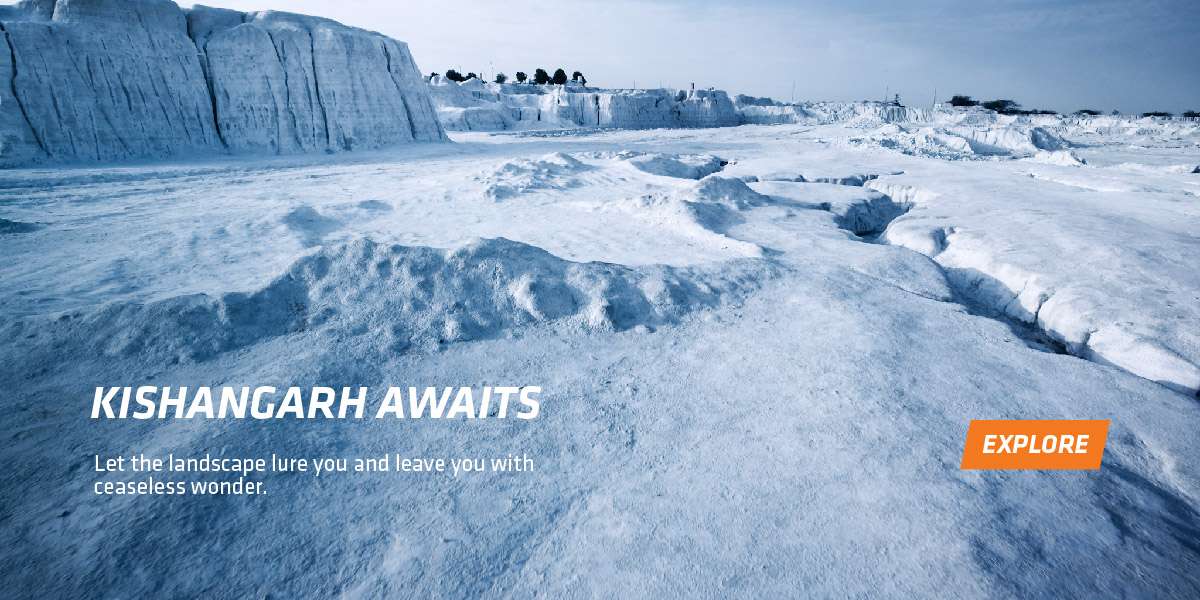
Kishangarh
The snow-white trail along the circumference of your tyres should be enough to tell you that you have finally arrived. But whether it is the moon or Switzerland depends entirely upon your imagination. Ask the locals, and they will tell you it’s Kishangarh Snow Yard, a cradle of curiosities in the heart of Ajmer.
Snow, however, is the last thing you can expect to find here. This sprawling spread of splendour has been blanched by marble dust, giving it the appearance of a snow-capped Swiss-scape, or a sublime lunar terrain.
The town of Kishangarh, 18 miles north-west of Ajmer and 90 km away from Jaipur, whinnies and quivers with history. Every square inch of this 201-acre land resonates with the bugle-flourish of ancient Rajasthani royalty. It is home to the Bani-Thani carving, the Kishangarh fort, Gondulav Lake, Mokham Vilas and Phool Mahal Palace. Untouched by the impulses of time, Kishangarh is a relic of resplendence; it is a wanderer’s wasteland, a portrait of divine desolation and muted wonders.
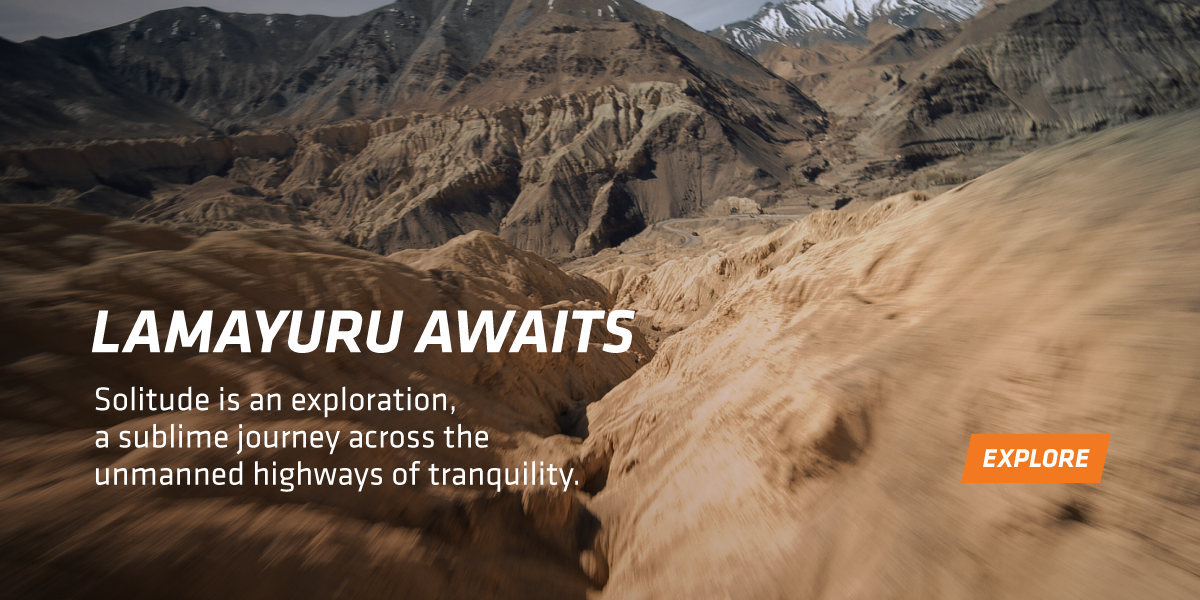
Lamayuru
If you find the wheels of your wanderlust rolling through Leh, make sure you stop at Lamayuru. Unconventional geological events have lent a spectral appearance to the landscape which tourists have come to associate with the moon. That’s how it came to be known as a moonscape.
When you visit the wizened monastery of Lamayuru, remember to breathe in the sacral panorama – the frozen figures on the fresco, reaching out through the mists of the accumulated centuries, the daunting masks, the glassed-in meditation cave of the Lama Naropa. Every speck of dust that shrouds the stately ruins of the monastery carries memories of the old world, its folkways and its fervours.
What you cannot miss is the annual festival, Yuru Kabgyat. It is a celebration of communitarian well-being, marked by masked dances and ritual burning of effigies. Once you have had your fill of exotica, ecstasy and exhilaration, remember to take a slice of Lamayuru home with you, leaving tyre tracks and a sense of untiring wonder in your wake.
Click here to find your way to Lamayuru.
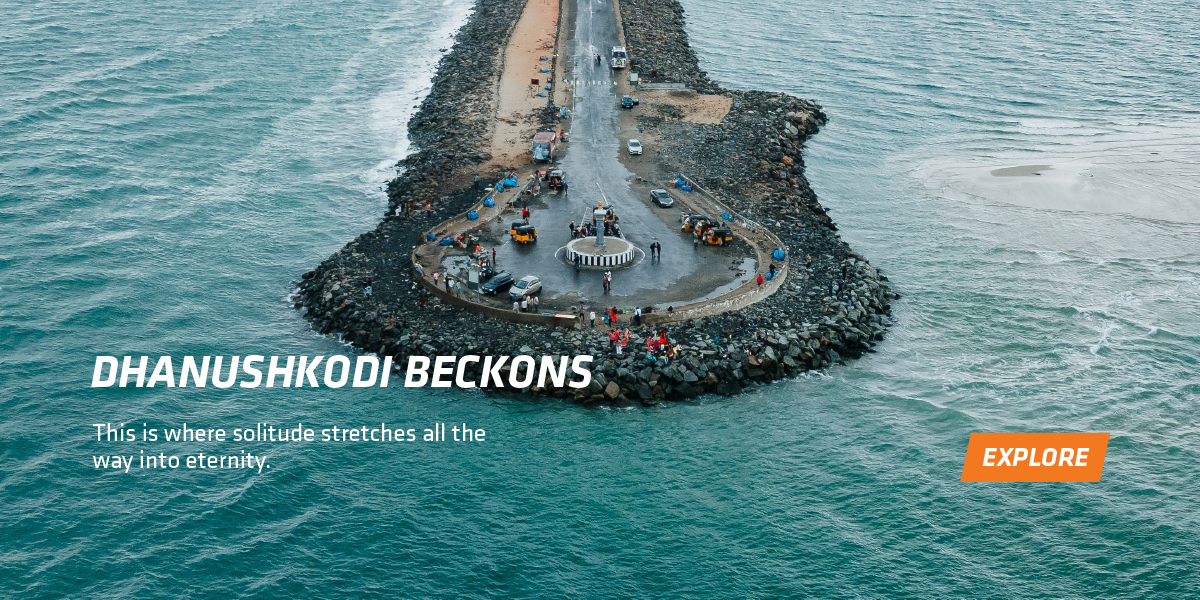
Dhanushkodi
Dhanushkodi translates to mean ‘the tip of a bow’. Legend has it that the illustriously divine Rama pointed at a distant horizon with the tip of his bow, one day, and asked for a bridge to be built there. That is where Dhanushkodi was born, along with a constellation of tales, sagas and myths.
If you find yourself bound for Dhanushkodi, remember to make a stop at the Kothandaramaswamy Temple, about 10 minutes away from Dhanushkodi. This is where you experience the dizzying diversity of our culturescape, distilled in morsels of memories, songs and folkways. Top it off with birdwatching – all the migratory gulls and flamingos will be waiting for you.
In Dhanushkodi, every moment is a dialogue with the divine. So, heed the call of adventure, and let your journey lead you to where the past meets the present, and the mundane fades into myth.
Click here to find your way to Dhanushkodi
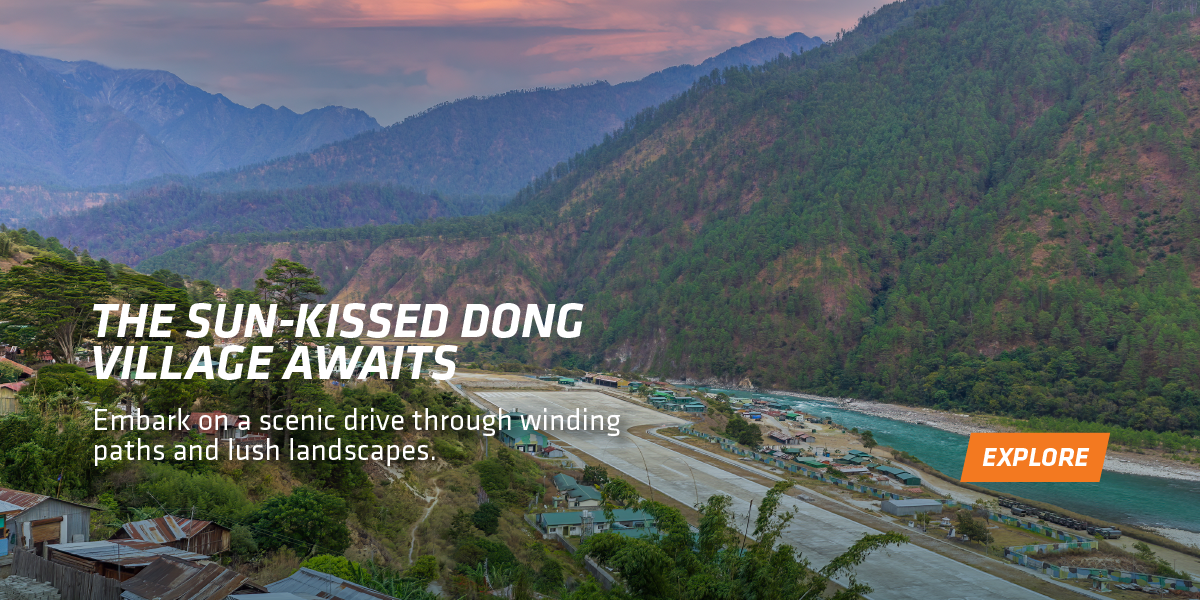
Dong Village
Cradled in the verdant lap of Arunachal Pradesh, the village of Dong is a silent spectator to nature’s ever renewing glory. Here, the mountains are painted emerald and the sky smiles in cerulean. Cascades of waterfalls set the rhythm for the fauna, and their idyllic orchestra of innocence. The sun rises every morning, dressed as an enchantress, to bewitch the sleepy village with her stupefying radiance.
Every step you take, between Chengyang Wind & Rain Bridge and Drum Tower Square, will rewind the centuries that have long been unravelled. Let the iconic landmarks and picturesque rice terraces whisper their wordless secrets to you, as you explore the soul of Dong.
Click here to find your way to Dong Village
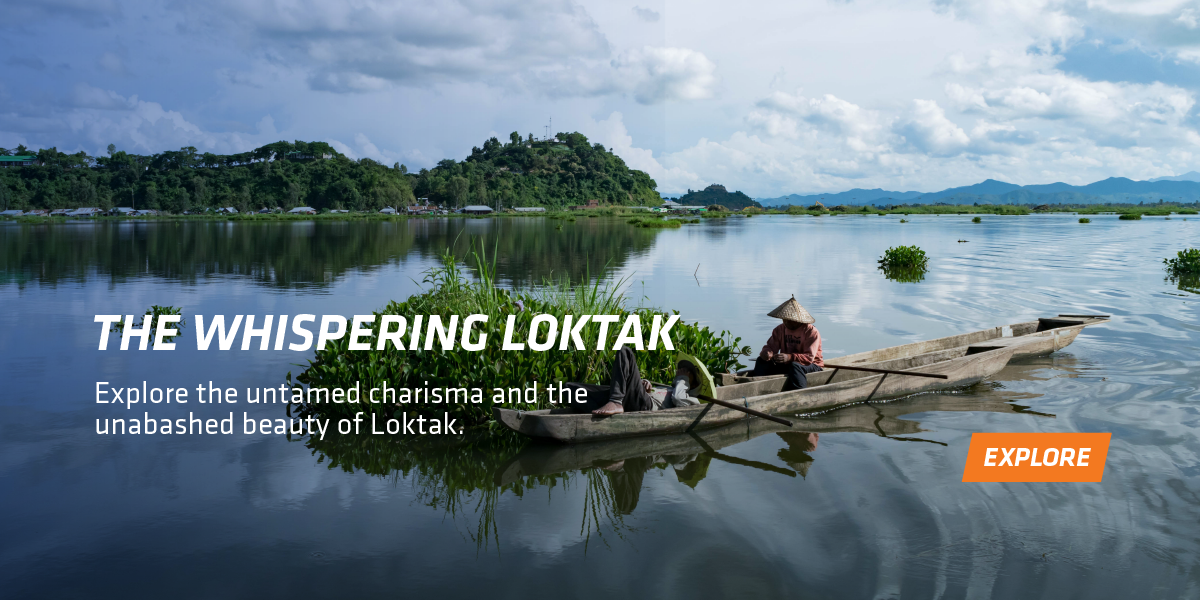
Loktak Lake
A drive to Manipur is incomplete without a visit to the placid waters of the Loktak Lake. It is by far the largest freshwater lake in Northeast India, bedecked with floating circular swamps called Phumdis, in the lilting local tongue. You won’t be the first one to mistake these swamps for islands. Clumps of soil, organic matter and vegetation float alongside the Keibul Lamjao National Park, the only one of its kind. This floating national park is the last refuge of the endangered brow-antlered deer or Sangai, the state animal of Manipur.
This is what solitude feels like – time alone with yourself, in the company of 230 species of aquatic plants, 100 different kinds of birds, and 400 species of fauna. Loktak is a slice of paradise, a floating dreamscape populated by black kites, east Himalayan pied kingfishers, northern hill mynah, lesser eastern jungle crows, Burmese pied mynas and lesser skylarks.
Click here to find your way to Loktak Lake
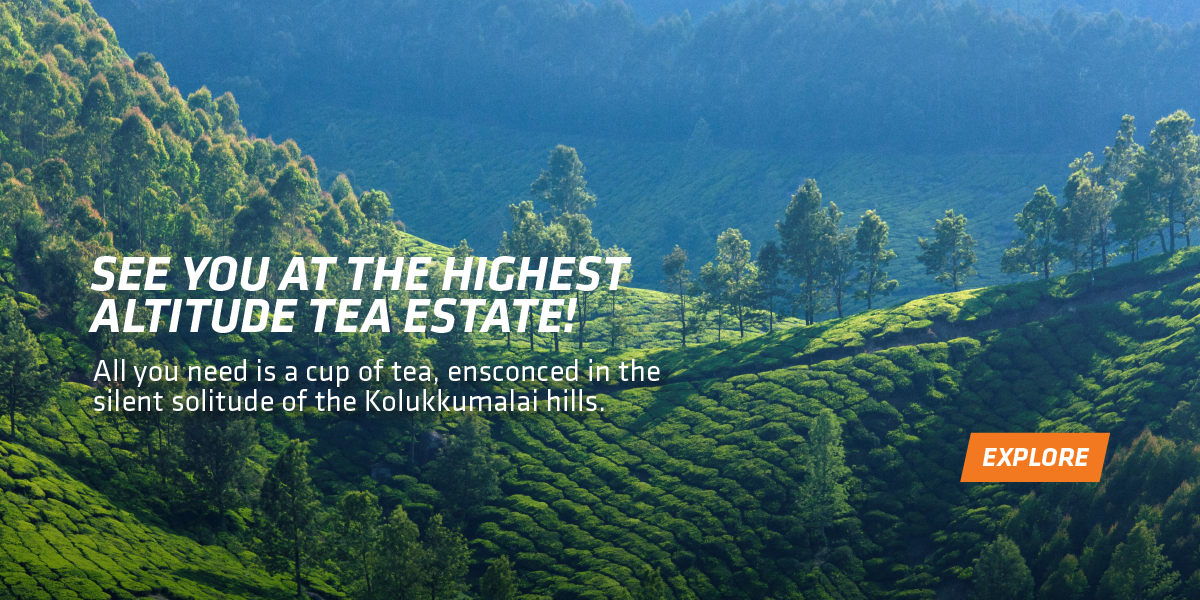
Kolukkamalai
Let serenity serenade your senses at Kolukkumalai, 7,900 ft above sea level and only 32 km away from Munnar. The panoramic vista of the bordering Tamil Nadu creates a mesmerizing spectacle of mists and shapes. This is where you need to be if you’re due for a game of peek-a-boo with cloud-capped hills.
The rolling acres of tea plantation will beckon you with their maudlin verdure. It is an experience that is easily felt, but difficultly expressed. You need only take a stroll to find out what we mean by that.
Click here to find your way to Kolukkamalai

Lolab Valley
It’s not for nothing that Lolab Valley has been conferred with the title of the Best Offbeat Destination at the prestigious Outlook Traveller Awards 2023. The valley is a siren song, beckoning travellers to forget their past lives and lose themselves in the enchantments of its bewitching landscapes.
Every syllable of silence spells the hidden name of the eternal sublime. The meandering Lahwal waters the valley while the Sattbaran rock and the fabled Kalaroos caves punctuate its landscape and memories.
Not a honk in the hearing range. The night belongs to a choir of rustling leaves and a ballet troupe of twinkling stars.
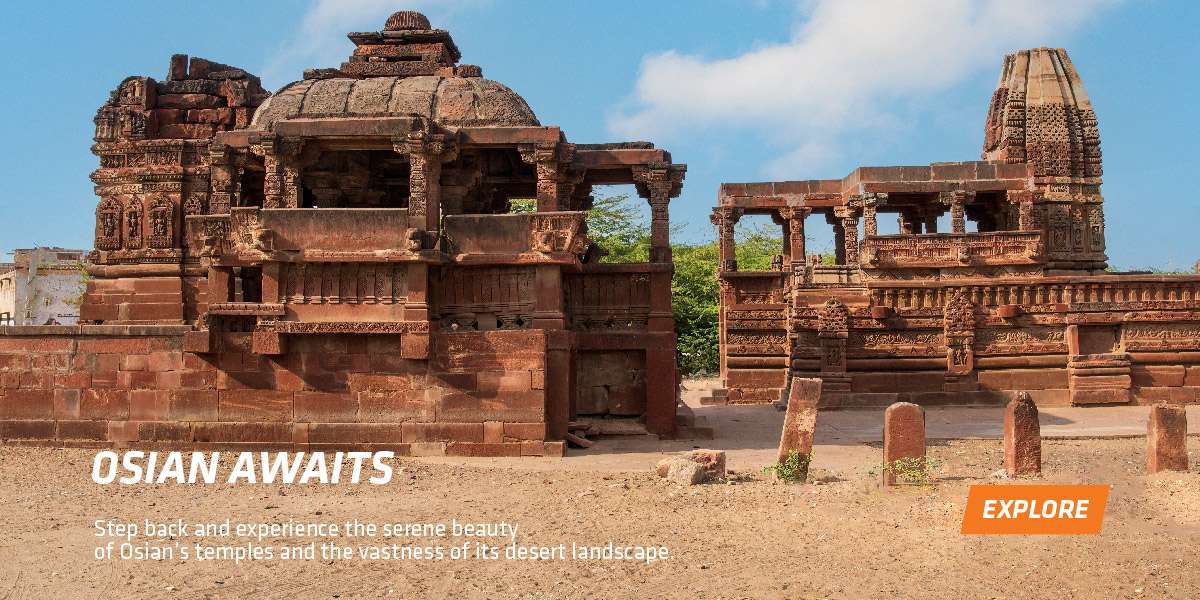
Osian
If you want the experience of viewing a sunset over pristine sand dunes, untrammelled by tourists, then head to the town of Osian, parked on the fringes of the Thar desert, about 65 kilometres from Jodhpur.
Dotted with temples and architectural marvels, the main attraction is the Surya Temple, dedicated to the Sun God. It also houses idols of Goddess Durga and Lord Ganesha. Don’t forget to look up at the ceiling: intricate carvings of serpents, coiled around lotus flowers, will stare right back at you. Other tourist attractions include Harihara Temple, Sachiya Mata Temple, and a Jain temple dedicated to Lord Mahavira.
Osian was believed to be the major religious and cultural centre of the Mewar kingdom. The soil has been watered by rich historical narratives, tracing their fountainheads back to the times of the Guptas, Nagas and the Pratihars. What’s more, the vibrant local traditions and the majestic sand dunes promise an unforgettable adventure.

Pasighat
Here, the rushing winds sing hymns to the Himalayas, and the Siang River courses through the veins of the valleys. Pasighat is a symphony of sceneries. It courts the dawn light at the banks of Siang and squanders a treasury of stars every night. The air gleans old wives’ tales from scented wildflowers and tells them all to the garrulous river.
Not just for the harmonic resonance of its flora and fauna, come to Pasighat for the history it harbours. Befriend a local and ask them to tell you the story of Kekar Monying hill cliff and the Komsing village, and the wars they fought with British Army.
If you’re planning to visit Pasighat, there’s no better time than September. You cannot miss the Solung Festival - an immersive and unforgettable cultural experience where the indigenous tribes of Arunachal Pradesh come together to honour their traditions, ancestors, and the bounty of nature.

Tharangambadi
Tharangambadi, or Tranquebar as it was once known, whispers stories of its rich past to whoever is willing to grant an audience. It starts in the Chola dynasty and is redolent of aromatic spices, exquisite textiles and effervescent cultural exchanges. What was once a flourishing global trade gateway is now merely Denmark’s long forgotten outpost in India.
Tharangambadi, which translates to “land of the singing waves”, was abandoned by time and forsaken by memory. The temples that stand on this soil predate the Europeans and will outlive us all. The old town is also home to Zion Church – the oldest Protestant church in India.
If you’re interested in preserved sea life, shells, models of boat, ancestral utensils, costumes, paintings and colonial history, why not pay a visit to the Tharangambadi Maritime Museum? They also have a small collection of Indian stamps, so that the philatelist in you doesn’t feel left out.

